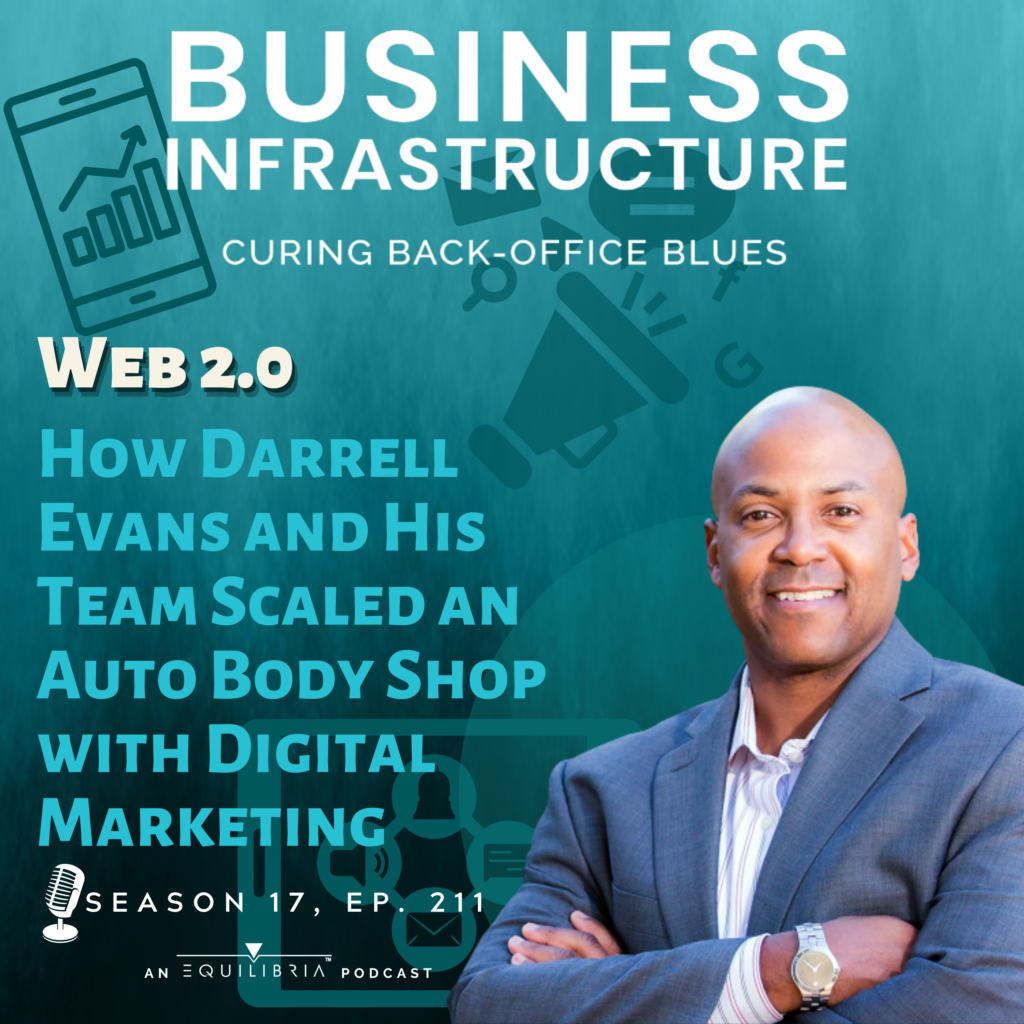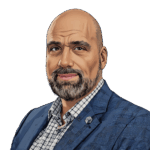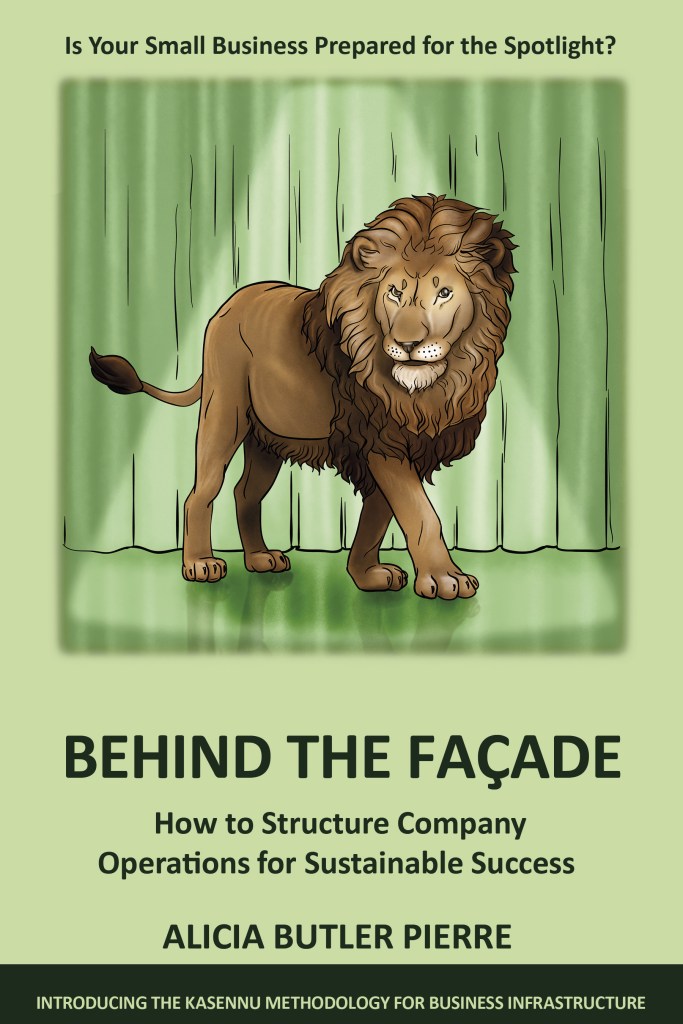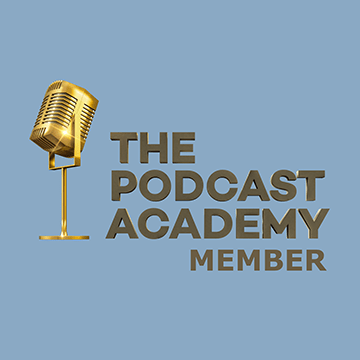Transcript
“I’ve always said that I don’t sell anything. I simply make sure that my clients show up when the triggering event happens and their ideal customer goes on a journey to solve the problem that they have. That’s what I do. It’s not about selling because when you understand their problem and their pain, the sale makes itself.”
I first learned about the hero’s journey from Joseph Campbell, the writer whose work inspired people like George Lucas of Star Wars fame. That was Darrell Evans you heard. He does for small businesses what Campbell did for Lucas, starting with the buyer’s journey.
This is the Business Infrastructure podcast – the show where we offer strategies, tactics, and resources to cure back-office blues and keep your business operating as good on the inside as it looks on the outside. I’m your host, Alicia Butler Pierre and you’re about to learn more about the buyer’s journey, how it can help you achieve massive scale, and so much more.

This episode is brought to you by Equilibria, Inc. the company behind this podcast where we design scale-ready business infrastructure for fast-growing small businesses.
Darrell Evans is a man of many talents including finance, sales, marketing, and technology. He’s found a way to parlay those talents into different roles including investor, business coach, and digital marketing maestro. He’s not one to let dust collect on his feet and seems to have a crystal ball that he looks into to predict future market trends. Either that, or he has a knack for knowing which digital technologies to become an early adopter of. And it’s paid off. He’s going to share one of those times when he started a digital marketing agency and scaled a 7-figure company’s revenue by 5x.
This is Ep. 211: Web 2.0 – How Darrell Evans and His Team Scaled an Auto Body Shop with Digital Marketing
My name is Darrell Evans and I’m from Las Vegas, Nevada born and raised, which some people find surprising when I traveled there. Like you’re actually from Las Vegas and I’m like, “Yeah, I’m like, what’s so wrong with that?” I’m like, well, what do you do in Vegas? I’m like, “Go to school, go to the movies, go to the grocery store, play football base.” I mean, we do all the same things here. You do where you live. Everybody thinks we live on the strip.

I went to college to pursue a degree in finance. I had a number of things pulling at me in my early twenties, but, I originally went to school for electrical engineering actually. And two years in, I was running a Taco Bell restaurant. I was one of the youngest general managers of a Taco Bell franchise while I was in school. And the business bug was biting at me. And so I actually even started a little business side hustle if you will, out of the trunk of my car as well, but fast forward into the switch to finance, I thought I wanted to go work on Wall Street. As I learned about stocks and in one of my financial analyst classes, portfolio theory, actually we had to build a portfolio and we were learning about all the things with root investment return and risk management and so forth.
Even though Darrell found finance to be fascinating, that urge to start his own business just wouldn’t go away. Once he finished college, he found a job in financial sales. And although he did well, he felt unfulfilled. Eventually, he moved to the mortgage industry.
I grew to become one of the top producing reps in the state and then ended up co-owning a mortgage company.
Yep, it was official…the venom from that entrepreneurial bug finally took hold of Darrell. But another bug was about to take an even bigger bite, one whose effect would make a lasting mark – the technology bug.
But my journey to where I’m at today started in 2003. 2003, I opened my first email account in terms of my email marketing. And I realized that I could take what I was speaking to my clients about on a regular basis. Be it frequently asked questions, things that they needed to know that they didn’t know. And I just dumped it all into an email system because I realized that my customer at that time, whether they were buying real estate or whether they were going to need a mortgage for that real estate or whether they were an investor or someone who was in the military, who was transferring to the base in my city, there was a time delay in the sales conversion.
Nothing was urgent. So I became an early student of making sure that I was top of mind when the transaction would take place and I would release the need for when it needed to close. So my sales pressure went completely out the door. So 2003, I started an email.
With an email system in place to help him stay top of mind for existing and potential clients, two years later Darrell took his lead generation process a step further.
Then I started learning about, oh, you can build these little things called websites. And so now I’m thinking, oh, leverage is at play because now I don’t have to. I mean, I still met clients of course, but fast forward to ‘05, we built a website. We started internet marketing leads division. So now we’re actually getting leads from the internet. ’07, I start on YouTube because now I’m saying, oh, not only can I communicate through email on an automated basis.

Oh, now I can actually record the videos and let people watch the videos.
At this point you might be thinking that leveraging videos to communicate about his services seems so obvious, but keep in mind, it’s 2007 and YouTube only started two years earlier. Darrell was clearly an early adopter of this cutting edge technology.
And if they could watch the video, that would be very similar to them hearing me in my office. And that might help build trust faster. You gotta be an expert at what you do, but at some point someone’s going to buy because they trust you.
With a multi-media strategy for attracting leads and converting them to clients, Darrell was well on his way to mega success. Just when he was on a roll, a year later, in 2008, the mortgage crisis hit the U.S. His company went from closing loans for an average of 4,000 homes a month down to 800. But Darrell’s not one to give up easily.
The market crashes. I went through my 12, 18 months of hard times, no question. But at the end of the day, most of my businesses coming in through the internet, people were looking at me in the, in, in the industry. They’re like, “Hey, how did you recover so fast?” “How did you, have business still coming in everyone else’s?” And I say, “Oh, you haven’t heard of this little thing called the internet?”
It was the inquisitiveness of others that led Darrell to meeting the person who would become his business partner of a future business. Turns out he also worked in the mortgage industry.

He was a vice president of business development at the time. And he was like, “Darrell, how are you getting all this business?” Cause I, you know, I had systems, I had processes, which is right up your alley, Alicia, I mean, I had gone through business coaching and set up businesses, set up my business back then to run with team and systems and processes and all those things that you want to have a well-oiled machine business. And here it was, ’09-ish. And I’m thinking, “Hmm, the industry is kind of faltering. And no one seems to know that you can acquire customers online.”
By 2009, Darrell had the business infrastructure required to take the business to the next level. That is, he had the people, the processes, and the technology to scale sustainably and profitably. As fate would have it, he also happened to work with a business coach who helped him develop a 25-year life plan. That work, combined with his assessment of the mortgage industry and the upward trends of digital marketing, gave Darrell the confidence to once again try something new, but with an untapped twist.
I realized, oh, digital marketing is only going to grow. And there’s only going to become more adaption.
I was really fortunate to really understand human psychology and really start to beat on this idea of understanding the buyer’s journey. How do people buy, what they buy and it wasn’t just for my experience. And then I started noticing the overlaps. I started noticing that us humans, we do the same things no matter where we came from, no matter what we look alike, no matter what neighborhood, no matter what job, but when we go to make a buying decision about anything, sometimes it’s a short decision. Sometimes it’s a long decision. There’s almost always the same buyer’s journey.
And it’s known to a lot of marketers, but I just became fascinated by it because I’m thinking, oh, so we can go into this marketing agency sort of world. And we can really impact all kinds of businesses, not just the businesses I was familiar with. And that’s became, that became the roadmap for us, which was, let’s start this agency.

Mind you, the recession was still going on but what others saw as crazy, he and his business partner saw as opportunity.
And we were like, let’s help small businesses, especially local businesses navigate this economic storm and transition the old school way of marketing — offline, face-to-face, billboard, radio, TV, et cetera. Not that they don’t still work but let’s actually help them improve their ROI, help them with the strategy, help them become more digitally forward and relevant and actually help them scale with this process.
That turned out to be a smart move. By 2010, they were off! And over the past 12 years, they’ve helped companies across 41 industries achieve a combined revenue north of 9 figures. With so much success, I asked Darrell if he could share one of their many stories from their early days in the agency.
So 2012, we meet a gentleman, his name is Mike. He was in the auto body shop or auto body collision repair business. This is a place that you would go to if you ended up in for whatever unfortunate reason you end up in a car accident and your car is disabled needs-repaired-body shop type of work, not, not an auto mechanic, but an auto body shop. And he happened to know or get into it. He got introduced to my business partner. And so that’s my business partner is who brought him in as a client. And he’d been in business 12 years. He’d had a website at the time we met him, but his complaint was very much the same.
The same as what Darrell has consistently heard, even to this day about various digital marketing tools.
“We’ve actually done some online marketing. We’ve run some ads, tried SEO. We’ve hired this firm, that firm we’ve hired someone in-house. Heck, I even had my kid do it because they grew up with a smartphone.” But the reality is, it isn’t working.

He was wanting to scale the business. Now at the time we didn’t know that he wanted to exit or if he was, it was even a consideration. What we knew was that he was one of the top shops in town. He was doing about four, four and a half million dollars.
This client was operating a $4M business at the time and wanted to scale. He knew he needed a marketing strategy but was frustrated. So Darrell and his team went to work applying their proven process. What exactly is that process and how did it lead to this client’s company scaling their revenue to $22M? Don’t go anywhere because after the break Darrell will tell you all about it.
You started your business because you believed you could make a difference. But now you have more demand than you can keep up with and if you don’t get your operations in order soon, you could lose everything you’ve worked so hard to build. The chaos is causing angry customers, bad reviews, failed audits, and more. The need for a unified team with processes they can follow and tools they can use without your presence is apparent. But where can you go for support?

The Smooth Operator masterclass may be the solution you’re looking for. It’s an on-demand, online course that not only teaches you what business infrastructure is, but also shows you how to create it through video demonstrations and access to a private community where you can get even more support. Build a foundation for operational success with a scale-ready framework that’s tried, tested and true. Sign up today at SmoothOperator.courses. That’s SmoothOperator.courses.
Before the break Darrell told us about Mike, the owner of an auto body repair shop in beautiful Las Vegas. Who knows his business is capable of growing to new heights? Here’s Darrell…
So it’s an emergency service business. So when we think about the buyer’s journey, which by the way is step one in our six step process, step one is really clearly understanding the buyer’s journey. We dig into the psychographics of what would happen in your ideal customer’s mind and what are they going to see? What are they going to hear? What are they going to say and what are they going to do?

I call it the triggering event, when a triggering event happens, what will they do? Well at that time, we know that if someone gets into a car accident and they’re disabled, and let’s, we’re, we’re suggesting that they’re not injured and being transported to a hospital, we’re talking about traditional regular fender bender, where the car’s disabled. Well, what’s going through their mind at that time for him, we were like, what’s going through your customer’s mind? Well, they don’t have a way to get to work tomorrow. How are they going to get around? Who’s going to get the car to the shop? All of these things go through the person’s mind.
Of course conducting research is one thing, but getting data firsthand is another.
Turned out that we asked the customer, we asked our client, and one of the biggest complaints as we did interviews was they don’t know who to use to get the car done the fastest and most affordable, even if they have insurance because their insurance company wants them to use the provider. What we decided to do was we said being on the first page of Google is not enough because there’s a lot of body shops and a lot of auto body collision stores, and sure, reviews are going to help. But we said, “Okay, what could we do to make the customer take one extra step quicker to his shop versus someone else’s shop?”
And that ended up being the million-dollar question…literally.
And so we asked Mike, “Is there a way for you to give the customer an estimate without them having to bring the car to the shop? Because no one in that situation wants to tow the car to two or three places and get quotes and price shop.”

Mike was brilliant about it. Mike gets, super serious about it. He was like, if you get them to take four pictures of the vehicle, of the damage, send us the VIN number. We can then almost guarantee, and there was a range of variants, but we will guarantee it within this range. And so now, we gotta figure out how are we going to get that to Mike on his website. And so we built at that time, a little mock app, it wasn’t really a fully functioning app, but it was sort of an early version of an app so that someone could do that from their car and from their phone at the time. And that’s how we started. That’s how we amplified conversion.
Buyer’s journey, check. Now, it was time to move on to the next steps of their process.
Two is traffic source. How are we going to get in front of the people when they have a triggering event? So step three is the lead gen process. Step four is the conversion process. Okay, great. So they took some pictures. So what? How do we get them to the, to the shop, right? Well, what they did, and this was, again, I have to give the client credit on this because we weren’t, weren’t a part of that mechanism because that mechanism wasn’t automated email because in this case it was a phone call and so forth.
Ah…this client went old school and used a regular telephone instead of an automated email campaign, a tool Darrell had perfected by this point. Turns out this higher-touch method may have been the better choice for this situation.
But even if it’s telephone, you have to coach a client through the best practice, because here’s the truth of a situation like that. They’re already frustrated, upset, angry, concern, or any of those combined, because they’ve been injured in an accident. One way I say injured, meaning the car is disabled and they don’t know what to do. Number two, they know they have a cost. So they are at a state of high anxiety, concern, frustration, et cetera.
So now, we can’t just have them send the photos and wait two or three days, which is what’s really common so we coached them around this conversion mechanism and they made a promise to get back to everyone within one to two hours or something like that. It was unheard of. And what added to this is what we call step five, which is the lifetime value equation. And that is, what can we do to make sure that you not only gave them the right price, but then you finish the product, right?

Which you delivered something great. And we helped him put a review system in place so that he could then amplify meaning, get the current customers who went through this process to go back and leave Google reviews, Yelp reviews, et cetera, which then of course built his brand in the marketplace. So now at a certain point, it almost doesn’t matter that the mechanisms in place, because if you Google someone and you find out he’s got the most reviews and he’s got them by better than 200, he’s better than 200 more reviews, good reviews, by the way, than the next competitor . Now psychology plays in, it’s like, “Oh, I’m not even gonna call the other people. Why would I, right?”
As a recap, Darrell and his team took Mike and his auto body shop through the phases of Buyer’s Journey, Traffic Source, Lead Generation, Conversion, and Lifetime Value Equation. So…what were the results?
And yeah, he went to, I believe it was a, roughly 22 million and then, was purchased by the number one competitor in the United States and it was pretty incredible. I can’t reveal the, the, the amount of the sale, but it was good. And then he took a year off and moved to a different market and started it all over again and came right back to us and said, “Hey, that was fun. Let’s do it again!”
Rinse and repeat.
Yeah, not quite as easy this time because the market has matured, but nevertheless, he was like, “Hey, if you pulled it off once, you help me do it again.”
So Darrell, how long did it take to cycle through that six step process to go from that $4 million to $22 million?
Yeah. So the process we do, our overlay goes into a client’s mechanism, usually within the first three to six months completely. And then it’s about refinement as, you know, as a, as a business infrastructure optimization expert, as you are, nothing is set in stone. The minute you put it in place, right. So there’s obviously lots of integration, but it was 2012-ish, 13-ish that we started working on this process methodology. It took us three to four months, maybe three, four months to start getting the traffic to his website, which is typical with SEO. And I, it was probably 2013 that we started this other aspect of it. And then it, I think the exit was 2019, spring, if I’m not mistaken.
Did you catch that? They worked for about six years to achieve that level of scale. Mike exited his business with a business infrastructure that was sustainable, repeatable, and profitable. The rigor paid off!
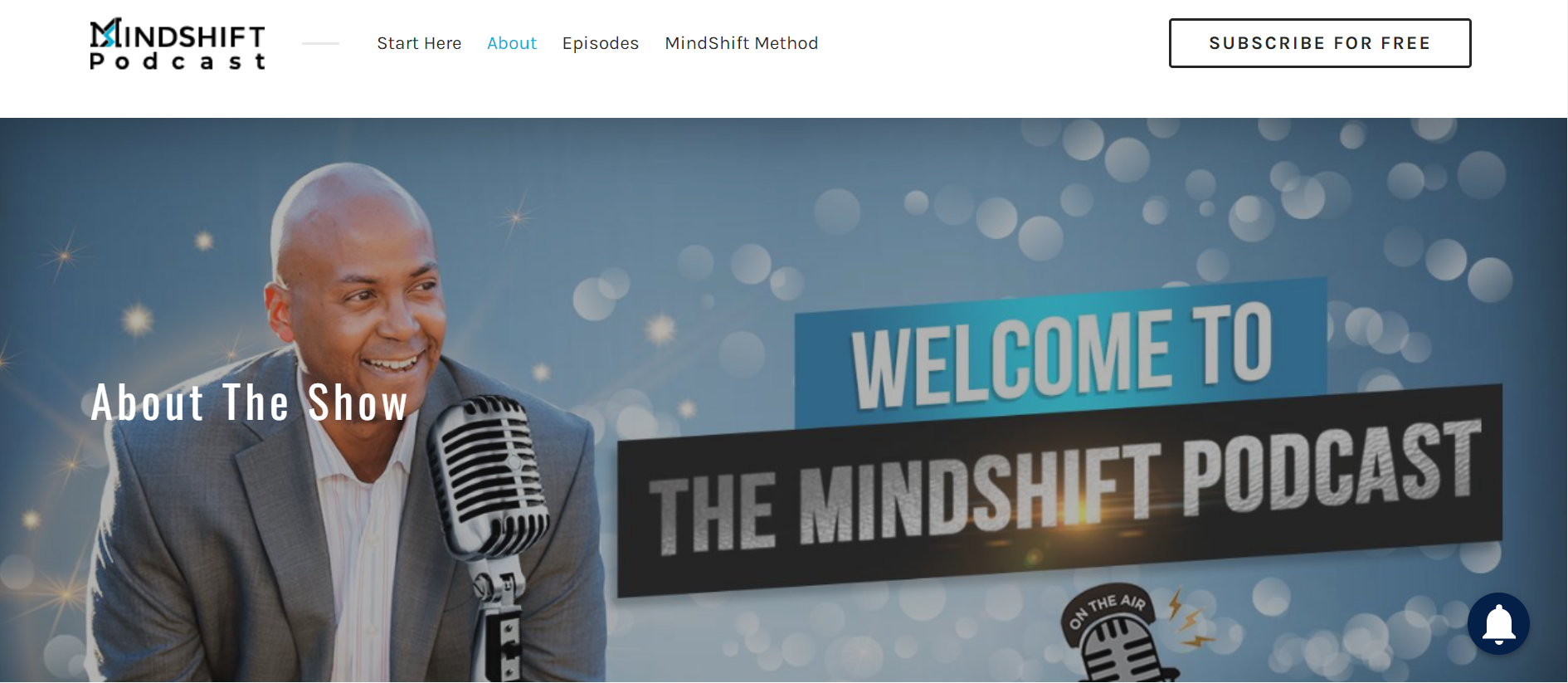
I met Darrell in 2021 when I was a guest on his MindShift podcast. And I learned so much from him, so I can attest to the power of his weekly emails. It definitely keeps him top of mind for me. So I asked him if he had any parting words of advice or any resources he thought would be helpful to share with you. He highly recommends books by Robert Cialdini and Dan Kennedy. But he also said this…
What matters is, are you visible? And do you have a mechanism that shows up in their world when they’re ready to solve their problem? And if an only, if they believe your mechanism is the right mechanism, will they take it? So can you help them allay fear, help them overcome their own objections through words and copy and sales talk, certainly, but the motivation comes from them to want to solve the problem.
It’s about figuring out what your client and their psych. What is their psychology for solving the problem. And when they decide to solve it, how does your mechanism fit into one of their possible possibilities? Because again, all consumers have more than one choice, so it’s okay if they don’t want your choice, but you should make sure your choice is one of the ones they can consider.
I have a theory I call the iceberg theory and, you know, the study says, science says that 10% of an iceberg sits above the water that we can see when we’re above the water and that 90% or so sits under the water. Well, I look at the 10% above the water as the, active number of customers out of a hundred, potentially that are even interested in what you do. I want my fair share of the 10% that are above the water. Who’ve actively engaged in the process of looking for a solution, but I spend a lot of our time building mechanisms and systems, and top of mind awareness for the 30 to 40% that are beneath the water, who haven’t yet begun the process.

You must own your client’s attention. And that’s going to be one of two ways, either through a mechanism that gets visibility. And then they come into your world through an email list, or you’re going to work to stay top of mind through what I call a visibility type of campaign on social media. But it isn’t posting 10 times a day on Facebook and trying to catch the Tiktok algorithm and go viral. That’s just not it, not for us, B2B people.
Take it from me…obscurity will kill any business. Like Curt Anderson warned in Ep. 209, stop being the best kept secret! So there you have it, folks. Could you benefit from a private coaching session with Darrell? Be sure to check out BusinessInfrastructure.TV. That’s where we’ll have links to the resources he recommends including books you can read to learn more about the psychology of your customers.
So honored to be here. Thank you for allowing me some time on your platform to share with your audience. And I hope they’ve gotten something out of it today. Thank you again.

Thank you so much for listening! If you enjoyed this episode, then subscribe to the show and leave a five-star rating and review wherever you’re listening.
Coming up in the next episode, you’ll hear a story from someone who actually uses storytelling to help other organizations scale. Trust me, you don’t want to miss it!
Growing and scaling a business is no small feat, but remember, Stay focused. Be encouraged. This entrepreneurial journey is a marathon and not a sprint. Until then, keep operating smoothly as you work to cure your company’s back-office blues.
This episode was written, produced, and narrated by me, Alicia Butler Pierre. Audio editing by Olanrewaju Adeyemo. Original score and sound design by Sabor! Music Enterprises.
This is the Business Infrastructure – Curing Back-Office Blues podcast.


